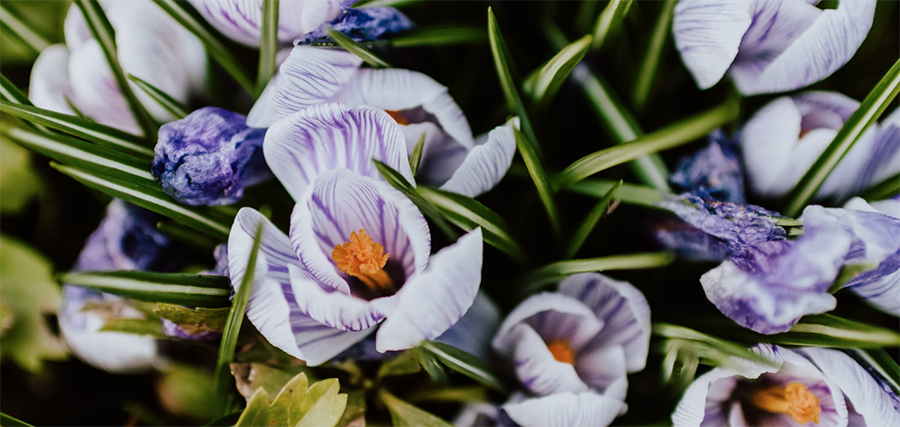Your perennials are the true heroes of your garden, coming back year after year for low-maintenance spring beauty. Now that it’s fall, they might be dropping blooms and drooping a bit, but they’re only getting ready for a long winter’s nap. Similar to bears and snakes, your perennial flowers remain alive by becoming dormant throughout the cooler seasons. Help them sleep better to wake fresh in the spring!
Remove Diseased Foliage and Plants
If a perennial didn’t thrive through the spring or summer season, check to make sure it isn’t suffering from a disease or a pest infestation. Obvious signs include holes in leaves, dead stems, unusual odors in the soil, and mushy, decayed roots. If you break a stem from a distressed plant and it breaks cleanly, the stem is dead. If you break it and it shows signs of green at the breaking point or is harder to remove, chances are the plant is salvageable. If the roots are dead, however, the plant should be removed and replaced.
Trim Perennials Back
The growing season has passed, but the plant is still alive under the soil. After the first hard frost, cut your perennials to two and three inches above the soil line. Remember that the seeds from your perennials can provide food and shelter for birds and other wildlife. It’s not necessary to cut perennial flowers back, but if you choose to do so, fall is the perfect time.
Divide and Conquer
The reason we love perennials so much is that they come back bigger and stronger every year. Many of these plants can become overgrown, however, and quickly take over a garden. This is the perfect opportunity to thin them out. Many perennial flowers can be divided and replanted in the fall.
Apply Mulch
Applying a layer of mulch to your perennial flower beds is a good way to give them an extra layer of warmth and protection throughout the winter.
No Rest for Pests
Some garden pests, like slugs, will burrow underground to devour your perennial’s tasty roots this fall. Head them off at the pass with pesticides or organic pest control around your plants.
Fall is the Best Time to Plant Perennials
Fall is the best time to plant your perennial flowers. Despite not growing above ground, your perennials will be taking the fall season to establish their roots and emerge in the spring. Plant new perennials about six weeks before you expect the ground to freeze, and make sure to water them and encourage their roots to grow strong.
RELS has a large selection of plants, trees, and shrubs ready for the fall planting season. Stop by our Frederick, MD or Silver Spring, MD locations and choose your garden’s next batch of unspoken heroes: perennial plants.

